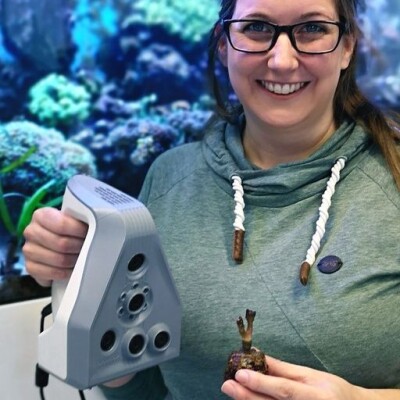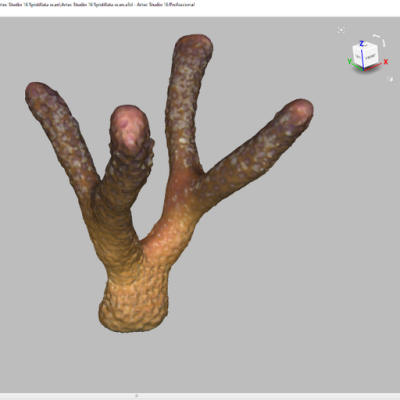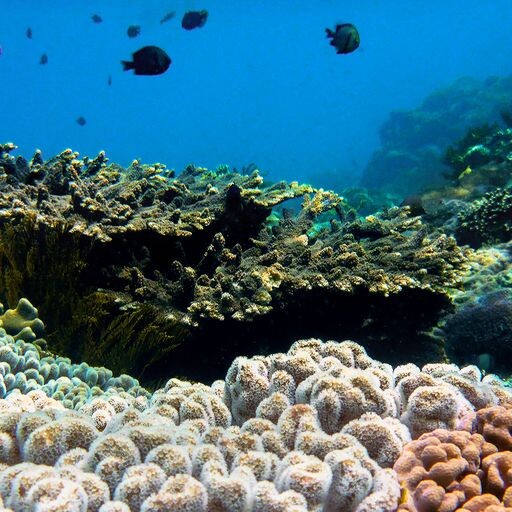Coral reefs are some of the most visually stunning ecosystems on our planets, but more importantly they are among the most crucial ecosystems on Earth. Among the most biodiverse ecosystems on the planet, coral reefs are home to myriad fish and other wildlife in the sea and serve vital roles for both commercial and environmental endeavors. The fishing industry benefits from healthy coral reefs due to the number of fish that call these ecosystems home, while also serving as natural barriers to protect coastlines from erosion and storm damage. They can sequester carbon dioxide from the atmosphere and help to maintain ocean pH levels as well.
Unfortunately, they are also at the suffering grave effects from climate change as warming oceans are causing these ecosystems to disappear. According to a 2023 article from NASA, approximately 14 percent of coral reefs around the world have disappeared since 2009, and that number could climb as high as 90 percent by 2050 if current warming trends continue. It’s a dire situation, and one that scientists from every corner of the globe are carefully studying for better understanding.
The monitoring of coral reefs and studies to have a better understanding of climate change’s effects on these ecosystems vary in methodology, with everything from underwater surveying to remote sensing from space being used to study this troubling trend. More recently, some scientists have begun to use 3D scanning systems to get a better understanding of how coral is being affected by climate change. Recently, Geo Week News spoke with Dr. Jessica Reichert, who started this work at Giessen University in Germany and now works at the Hawai’i Institute of Marine Biology, as well as Sergey Sukhovey, Chief Experience Officer and Founder at Artec 3D, about this work.

In describing how this work got started, Reichert tells Geo Week News that she’s been working on coral research since 2010, focusing on “the long-term effects of global change stressors on a variety of coral species,” and that technology has always been a “key feature” in said research. She continued to say that corals are a complex subject for long-term study but can theoretically live for hundreds of years.
Traditionally, as Sukhovey relays to Geo Week News, the methods of study have been invasive for the species that is sensitive to these methodologies. He notes that one of the keys to this kind of research is to track growth, but that some of these methods, like covering a coral in wax or foil, can result in the coral dying. The 3D scanning methodology helps work around that and allows for more complete studying of effects over time, particularly scanning workflows that can be done quickly so the coral can be moved back into the water as soon as possible.
“That’s why I’ve fully adopted 3D documentation methods in my research. Artec 3D’s Spider was very quick in the data acquisition (an important step as corals have to be taken out of the water), it’s highly precise, provides color information, and doesn't require reference points,” Dr. Reichert said.
She also noted that Artec’s Spider, a handheld scanner which was used in this work, is more effective in scanning living corals compared to other scanners because it’s better at dealing with reflections coming from wet surfaces, a point Sukhovey backs up.
“Spider is the most convenient because it’s handheld,” he said. “It’s also the most accurate, and the most sharp, I would say. It sees more details for their application. They also say they like it because it scans through moisture that’s on the coral because it’s taken out of the water, and they like it because it doesn’t add stress to their scanning. The software can also have its settings changed and adapt scanning qualities for different corals, which can be quite different in terms of color.”
In terms of how this workflow is completed, Reichert’s work is focused on the effects of microplastics on the coral, with current focus on how this is effecting larger coral ecosystems. She says that the addition of 3D scanning has had a positive impact on their productivity.
“I perform all scans at once. I usually scan about 50 corals in one afternoon, or 100 in a day with 100% guarantee of safety for the coral. Two researchers are key to the scanning process – one handling the corals and the other doing the scans. In more detail, we take the coral out of its experimental tank, place it on a rotating plate in a well-illuminated space, and scan the coral with the handheld 3D scanner in two rotations from different angles. We can document the 3D shape of the sensitive coral organisms in less than a minute,” she told Geo Week News.

“Artec Spider has benefited our analysis of the subtle impacts microplastic has on corals. For the first time, 3D scanning allowed us to document coral growth rates in a highly precise but non-invasive way.”
Given that this is a relatively new workflow for this area of study, it of course has not come without its challenges. Reichert relays to Geo Week News that the biggest barrier that has had to be overcome by her team is simply iterating and figuring out the right way to do things. While frustrating, it’s a vital part of the process.
“The challenge with any new technology is method development. In order to best use new technology, I have found that teams need to spend a great amount of time to understand it and how it will adjust the workflow. On the flip side this can add more time to completing a project than one might anticipate. But it is important to establish a method that will lead to success and provide a foundation for other researchers to use in the future. My advice would be to stay curious and pay attention to the details. Don’t try to jump these important steps. It is worth the effort and pays off in the end!”
This is just another example of the ways that use cases for 3D scanning are expanding, and how these not only help streamline commercial workflows but can also be used to help monitor the effects of climate change on wildlife, both on land and at sea.






